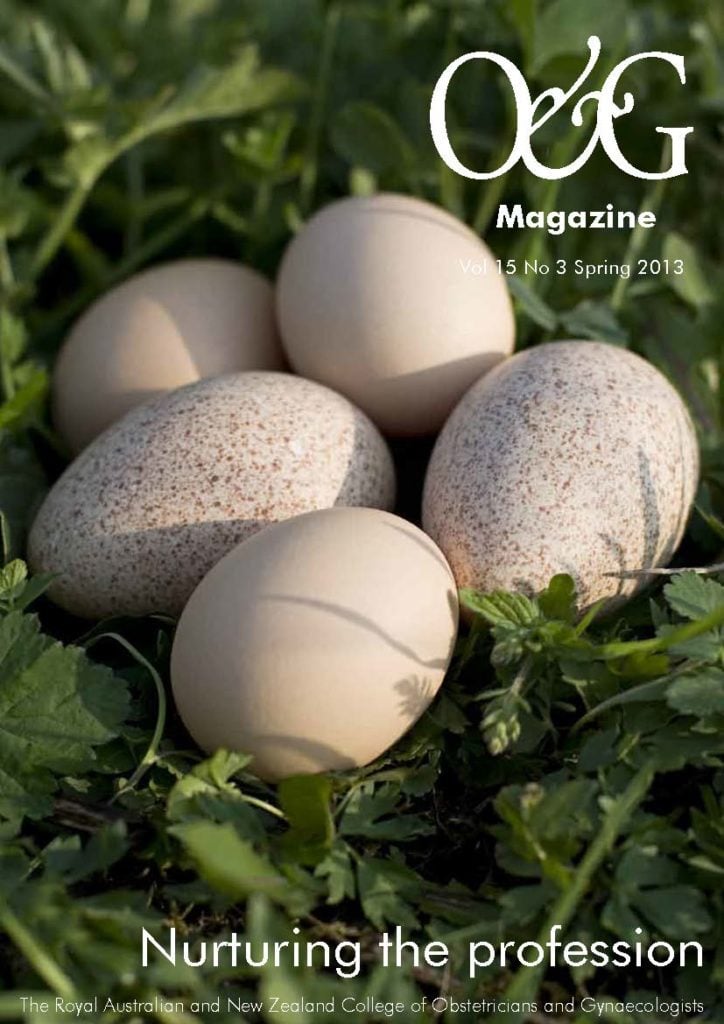Q&a attempts to provide balanced answers to those curly-yet-common questions in obstetrics and gynaecology for the broader O&G Magazine readership, including Diplomates, Trainees, medical students and other health professionals.
Q
A woman in the antenatal clinic has had two previous caesarean sections, the first for obstructed labour, the second a planned elective repeat caesarean. Both were uncomplicated. She presents with her doula at 34 weeks gestation after an uncomplicated antenatal course and says that unless a trial of vaginal delivery is undertaken she will attempt a homebirth. How should her care be managed?
a After a cordial greeting and an introduction to the doula, we should open with a discussion of the patient’s reasons and expectations of attempting a planned vaginal birth, but in a positive manner, informing her of the systematic review of this precise clinical situation.1
In this study the successful vaginal delivery rate in women planning a vaginal birth after two previous caesarean sections (VBAC-2) was 71.1 per cent, with a uterine rupture rate of 1.36 per cent, a hysterectomy rate of 0.55 per cent, a blood transfusion rate of 2.01 per cent, a neonatal unit admission rate of 7.78 per cent and a 0.09 per cent chance of perinatal asphyxial injury/death.
The maternal morbidity for VBAC-2 was comparable with repeat caesarean section (RCS) after two previous caesarean sections, while the neonatal morbidity data were too limited to draw valid conclusions.
In addition to the above results, the need for maternal intravenous access, maternal-fetal monitoring, time intervals for serial vaginal examinations and the selected parameters of the progress of labour should be discussed in detail2 to ensure the patient and her doula are aware of these requirements, which may or may not sit well with the patient’s desire for a ‘natural birth’, along with the precise implications of uterine rupture and the maternal and neonatal consequences of such a complication occurring during labour.
A policy of awaiting the spontaneous onset of labour would normally be instituted as not only will this be more likely to be associated with successful vaginal birth3, but also the difficulties in trying to induce labour and its greater chance of scar rupture and caesarean section may be avoided.4,5
If induction of labour is indicated for an obstetric complication or if the pregnancy progresses past the expected date of delivery then the clinical situation needs to be reviewed in its entirety and the way forward agreed upon with the knowledge that induction of labour in the face of an ‘unripe’ cervix with VBAC-2 may only have a 25 per cent successful vaginal birth rate or less with at least a 4.08 per cent risk of uterine rupture.2
Meaningful communication with the doula is an important aspect of the management and this should be straightforward if the doula adheres to the stated ethos of the Australian Doula College6 that: ‘a doula, or birth attendant, is a woman offering non-medical support and information to parents in pregnancy, childbirth and the postnatal period.’
However, a number of doulas adopt the role as the negotiator of the obstetric and midwifery care between the patient and her obstetric and midwifery attendants, which adds another dimension in providing compassionate, dedicated and professional care and can lead to tension, mistrust and confusion.
The delineation of responsibilities needs to be discussed and decided upon well before the onset of labour in order to avoid disappointment and frustration primarily for the patient and her partner, but also for the midwifery and obstetric staff.
The American College of Obstetricians and Gynaecologists advises that doulas acting beyond the role of patient support by providing medical advice should be appropriately advised out of the presence of the patient and that professional associations/institutions should have policies in place to address such issues.3,7
If the above arrangements, both in relation to her care and the role of her doula, do not prove to be acceptable to the patient despite documented, repeated discussion then we may have to accept that the patient may attempt a homebirth and the public hospital providing her antenatal care will have a duty of care to provide emergency care, after transfer, in the sad event of an obstetric/neonatal complication occurring during her labour or after her delivery at home.
References
- Tahseen S, Griffiths M: Vaginal birth after two caesarean sections (VBAC-2) – a systematic review with meta-analysis of success rate and adverse outcomes of VBAC-2 versus VBAC-1 and repeat (third) caesarean sections BJOG 2010 Jan; 117 (1): 5-19.
- Royal College of Obstetricians and Gynaecologists Green Top Guidelines: Birth after previous caesarean birth 2007 No. 45.
- American College of Obstetricians and Gynecologists: Vaginal birth after previous caesarean delivery. ACOG Practice bulletin no.115. Obstet Gynecol 2010 Aug; 116 (2 Pt 1):450-63.
- Dekker GA, Chan A, Luke CG et al: Risk of uterine rupture in Australian women attempting vaginal birth after one prior caesarean section: a retrospective population-based cohort study. BJOG 2010 Oct; 117(11):1358-65.
- Dodd JM, Crowther CA: Elective repeat caesarean section versus induction of labour for women with a previous caesarean birth. Cochrane Database of Systematic Reviews 2012, Issue 5. Art No: CD004906. DOI: 10.1002/14651858. CD004906. pub3.
- http://www.australiandoulacollege.com.au/doula_services 22.06.2013.
- Ballen LE, Fulcher AJ: Nurses and Doulas: Complementary Roles to Provide Optimal Maternity Care. J Obstet Gynecol & Neonatal Nursing 2006, 35 (2): 304-11.






Leave a Reply